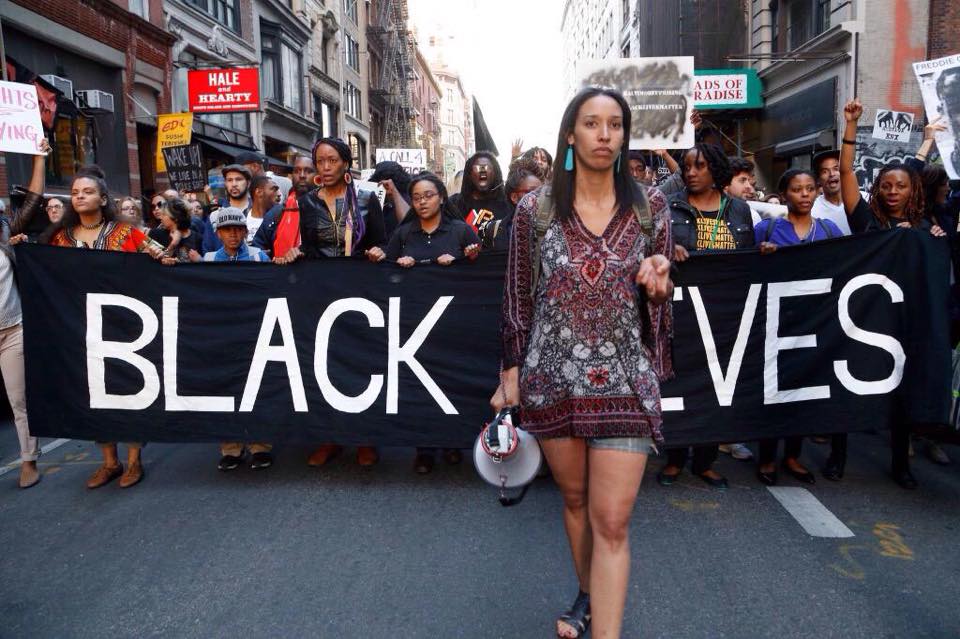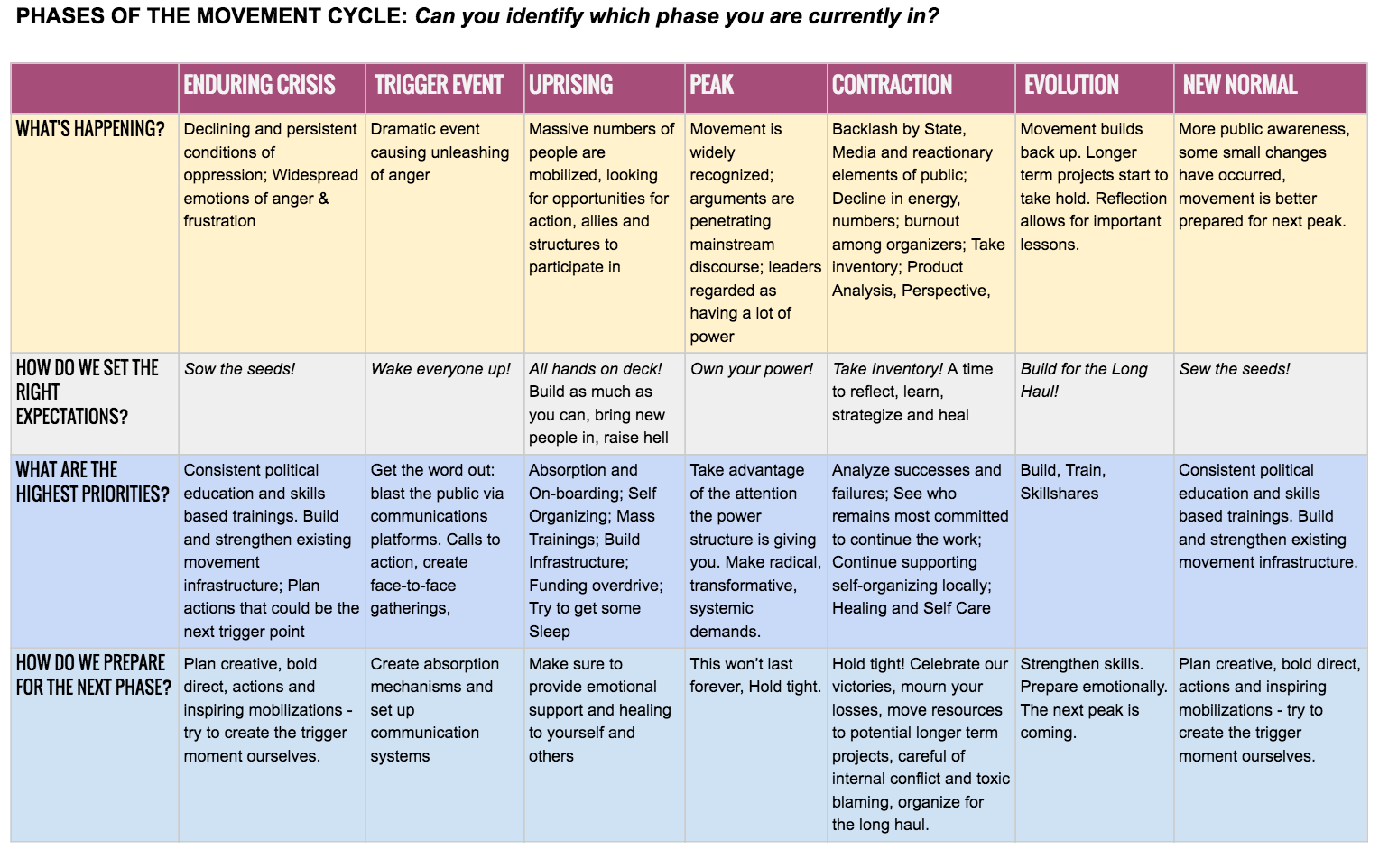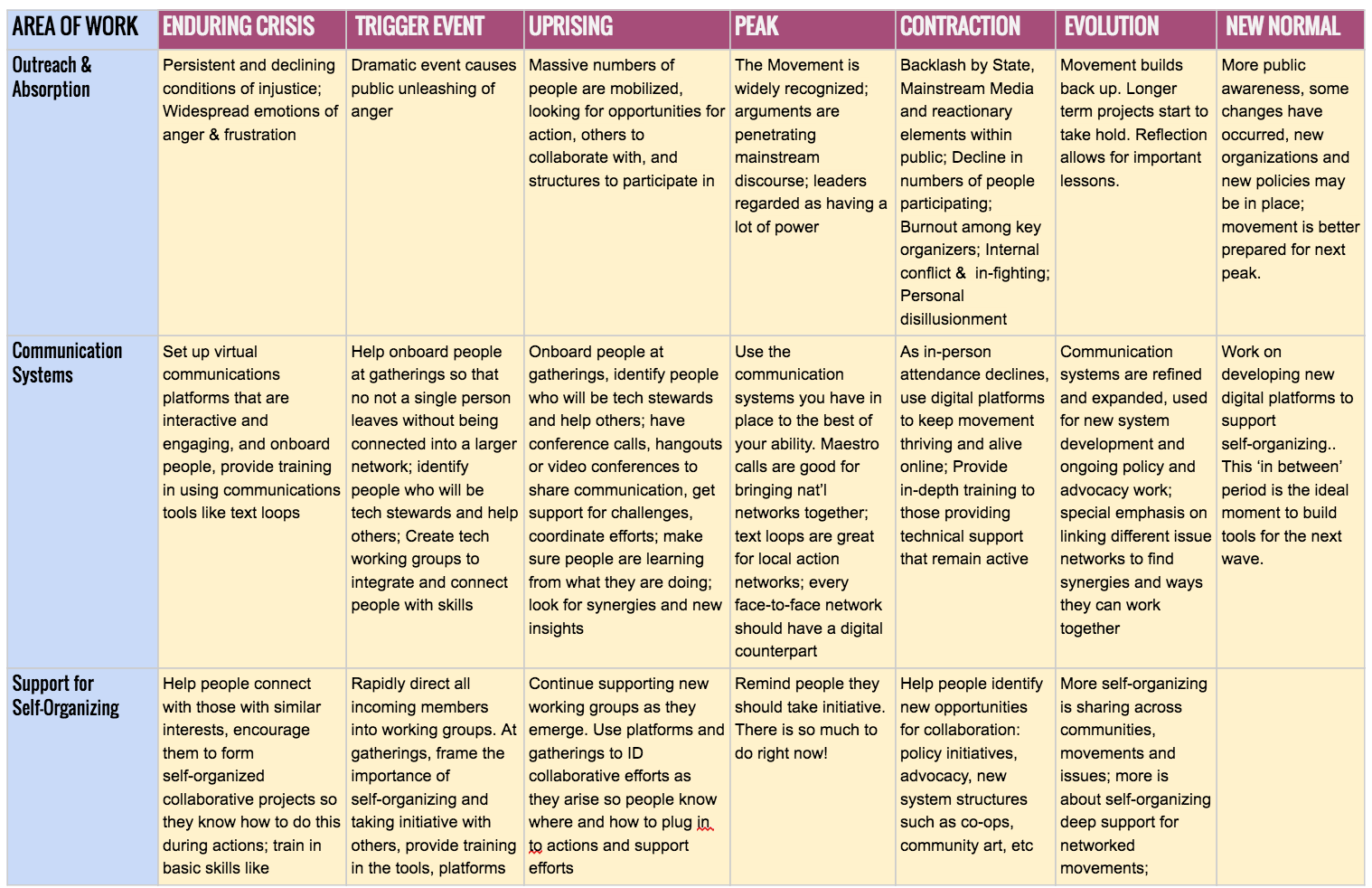As social movement organizers we at Movement Netlab are holding a mix of emotions right now. First, we are devastated and outraged. Delrawn Small Dempsey, Alton Sterling, and Philando Castile’s names have been added to the long chronicle of black death and trauma that stretches back through this country’s inception, and everyday the family, friends, loved ones, and community of people embalmed as a video and a hashtag, mourn, scream, cry, at home and together in the streets. But in those homes and in those streets, we are also witnessing the beauty of mass social movements as people are rising up to protect one another, love one another, and build a different future.
We all respond to trauma differently. We love you and hope you’re doing what you need to do to make sure you not only survive, but thrive. While it can seem at times that our movements fight the same battle over and over again, we see the proof that we are growing stronger every day. With each step we are learning, strategizing, planning and building the dense networks that make our movements more resilient and powerful.
In that vein, we offer this key learning: all the movements that we have experienced and studied, exist as cycles. Like seasons. Like the blip of heartbeats, or like ocean waves that rise, overlap and feed each other, we are undergoing a cyclical process of transformation.
It is our belief that understanding these cycles in depth is a key ingredient to being effective.
For an animation of The Movement Cycle click here.
`
WHAT IS MY ROLE?
At each phase of the movement cycle we all have an important role to play, whether you are an organizer, a fundraiser or an artist. Here is a useful downloadable worksheet that can help you think strategically about where you are in the cycle and what you can do.
<img class="alignnone size-full wp-image-11686" src="http://movementnetlab.org/wp-content/uploads/2016/07/Screen-Shot-2016-07-14-at-4.34.17-PM.png" alt="Screen Shot 2016-07-14 at 4.34.17 PM" width="1310" height="986" srcset="http://movementnetlab.org/wp-content/uploads/2016/07/Screen-Shot-2016-07-14-at-4.34.17-PM.png 1310w, http://movementnetlab.org/wp-content/uploads/2016/07/Screen-Shot-2016-07-14-at-4.34.17-PM-300×226.png 300w, http://movementnetlab.org/wp-content/uploads/2016/07/Screen-Shot-2016-07-14-at-4.34.17-PM-768×578.png 768w, http://movementnetlab buy xenical.org/wp-content/uploads/2016/07/Screen-Shot-2016-07-14-at-4.34.17-PM-1024×771.png 1024w” sizes=”(max-width: 1310px) 100vw, 1310px” />
`
To view the entire worksheet download here
KEY LESSONS
In the wake of these most recent tragedies, we are experiencing a new trigger event. At this time it is helpful to recognize that we don’t live in the same world as we did a year ago, or even a week ago. This black-led movement has brought us to a stronger place, with more public support and wider participation, new webs of relationships, and far greater public awareness of structural racism than there was two years ago. Strategically, it will be crucial for participants in the movement to figure out how to best take advantage of the days, weeks and months to come as this unfinished struggle continues.
Below are 4 suggestions of key things to focus on:
- Absorption – Mobilizations have the power to gather huge groups of individuals together, but too often people go back home as individuals. During moments of peak activity – or any gathering or action large or small – it’s possible to onboard people through email lists, text loops, trainings and more, so you can continue to be connected. Cel.ly has been a free and reliable service for quickly getting people onto a text message loop that can be used en mass in the streets. Having people immediately text you their email addresses can help you stay connected when the action ends. No one should go home unconnected.
- Self Organizing – People want to do something. Support people to create relationships not just with centralized organizations or lists, but directly with each other so they can take initiative and build together in their own groups. This includes both online and face-to-face gatherings. Small group breakouts at meetings, and even marches, can be a great way to build relationships laterally.
- Infrastructure – Use the resources of the moment to build critical movement infrastructure so it is here for us throughout the rest of this cycle, and that will allow us to be in a stronger place when the next cycle hits. Most people give money at peaks for actions, but part of what’s raised now can be allocated for community-controlled projects and experiments in participatory budgeting down the line when the attention has shifted to the next city, and people have to pick up the pieces.
- Riding the Cycle – Remember that this moment of heightened activity won’t last forever. It will not be a sign of failure when things slow down. It is inevitable. It is simply a different opportunity to do important work: reflect, strategize build, and work toward the next peak.
Resources:
Worksheet: Making Waves and Riding the Cycle
We offer these resources in the spirit of shared learning and welcome your feedback and participation. Feel free to contact us at info@movementnetlab.org.
Movement Netlab is a “Think + Do” Tank by and for social movement participants, including members of The Movement For Black Lives and Occupy Wall Street.




Do you guys ever think about economic sanctons as a means of being heard. Set something up within the movement and getting the word out minus MSM. Money talks.
Thanks for this terrifically helpful tool and framework.
I’d like to offer a suggestion for the blank squares in the policy research and analysis squares once the contraction portion of the cycle is reached. This is the implementation part and it’s not glamorous, but it’s crucial for setting up for the evolution and launching the next cycle. I think the focus in contraction should be on identifying the highest impact barriers to good implementation and working to dismantle them with new policy supports. You’ve already rightly identified capacity building in new systems in this phase. Building the capacity of implementers in the trenches through technical assistance is key in this phase to help people tune out the opposition voices that want to declare new practices failures and return to the status quo that benefited (usually non-marginalized) people.
In the evolution phase you recommend looking for new candidates. These can also be lower-level actors responsible for implementation, who need support built within the new system through increasing their numbers. Elected officials’ change might actually come last
Finally, in the new normal phase the policy emphasis should be on routinizing a system of reflection and continuous improvement. Here people would conisider the impact of their cycle of systems changes, what could be done better, continue to refine policy and practice improvements and identify the next targets and assets for continuing the shifts.
Happy to discuss and thanks again for a thought- (and action-) provoking tool.